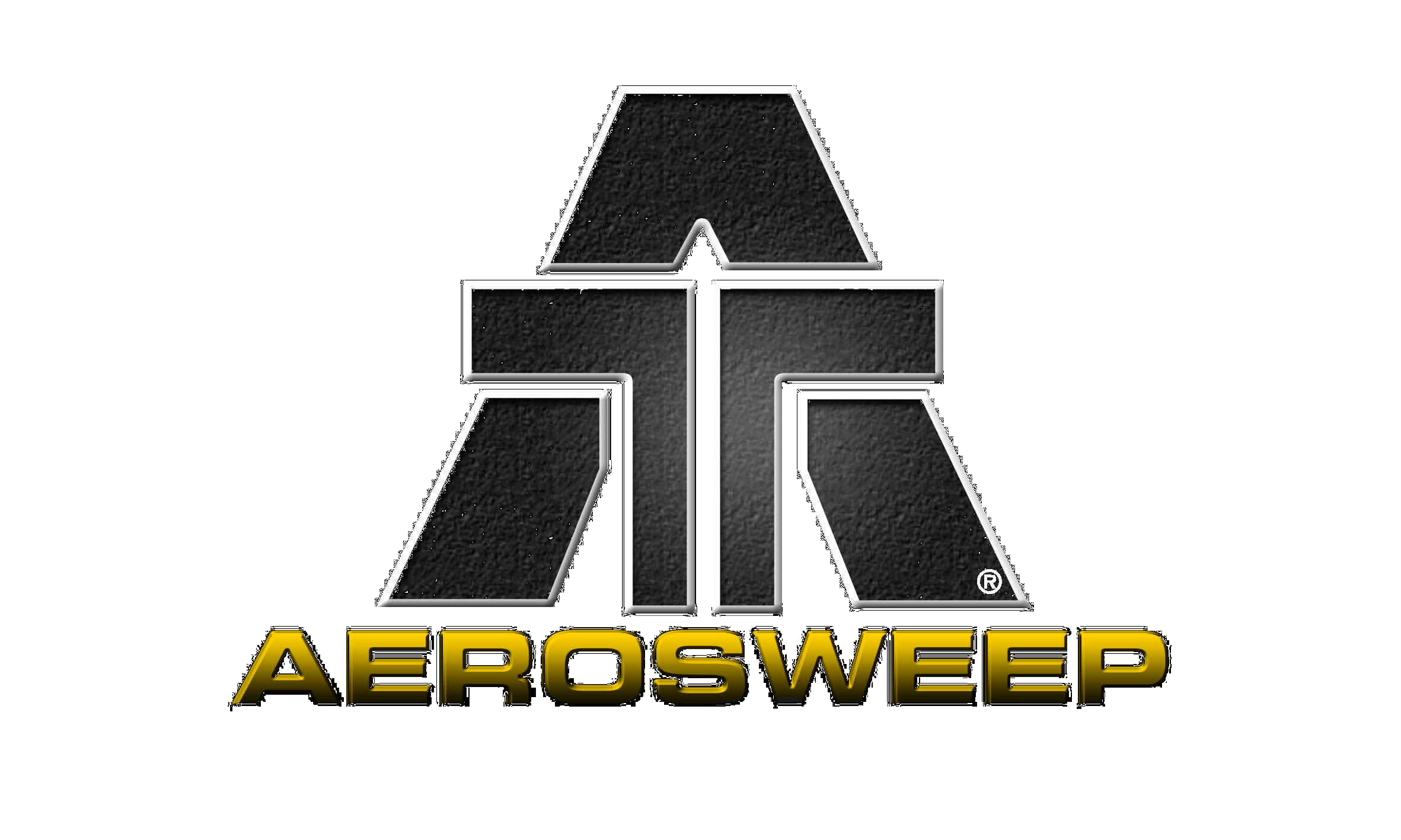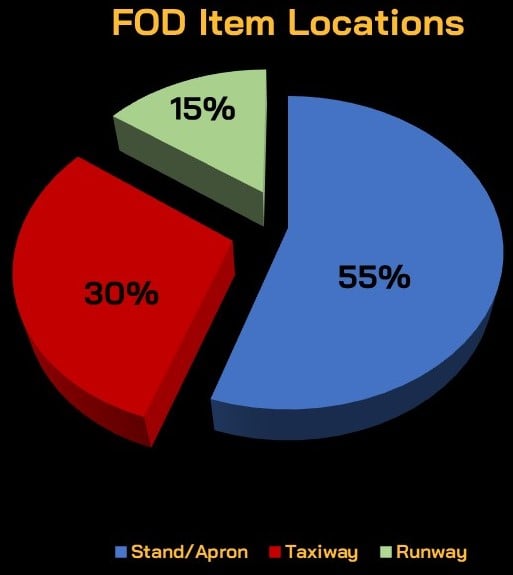Implementing A Foreign Object Debris Damage Control Procedure
It’s one thing to be aware of the dangers posed by foreign object debris (FOD) in the modern commercial aviation sector, but it’s another matter entirely to have a detailed plan in place for managing this threat. Therefore, having a Foreign Object Damage prevention plan is critical. FOD comes in a vast range of forms, and it’s all too easy to overlook one or more potential trouble spots. As such, a written FOD prevention plan that personnel can consult for guidance and clarification is an essential process for mitigating FOD’s consequences.
Any FOD plan should be devised in accordance with a particular facility’s unique environmental and operational characteristics. To create such a plan, it may be helpful to base it on a generic template that can be modified where needed. Aerosweep has put together the following step-by-step outline that can be consulted when assembling a comprehensive foreign object damage debris control procedure. This page is also available as a download as a pdf in eBook form using the links below.
Scope of The Plan
The FOD plan applies to all areas of an aviation environment, indoors and outdoors, where hardware and vehicles are stored, assembled, repaired, transported, tested, or otherwise put into use. It also applies to areas in and around the facility where FOD can originate and find its way onto the airport’s aircraft operating areas.
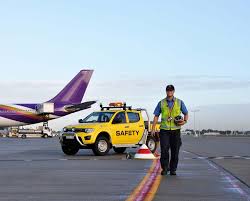
Definition of Terms
This page is downloadable as an eBook, with a download link at the end of this page. This eBook employs several key terms that are commonly used within the aviation industry:
- Foreign Object Debris – Any object or substance outside its proper place that can cause harm to equipment, in physical or economic terms, or interfere with its correct operations.
- Foreign Object Damage – Any harm caused to equipment due to the presence of a foreign object.
Both foreign object debris and foreign object damage are customarily referred to as FOD. However, the meaning of the term should be clear from the context in which it appears.
Training
All employees who work in or must pass through airside areas where foreign objects pose a threat to aircraft and personnel should be required to undergo FOD training, as provided by the company. Training materials should be customized when appropriate to address the unique characteristics of the facility. Management has the responsibility of ensuring that all personnel have completed the required safety training. Ideally, employees should receive some form of FOD training:
-
When they are hired, and
-
Every year after that.
FOD Awareness For Visitors

Non-airside personnel who visit the facility can pose a FOD risk. The facility should follow one of two policies regarding the presence of visitors:
-
A FOD-trained employee must accompany visitors at all times; OR
-
Visitors must be given a FOD briefing before they are allowed to move about the facility.
If the briefing option is to be used, it must be adequate to ensure visitors are fully aware of the complete range of FOD risks they might encounter during their visit. This requirement should apply to everyone at the facility who is not an employee.
Routine FOD Housekeeping Practices
Employees must be aware of everyday cleaning practices that can minimize the likelihood of stray foreign objects compromising the work environment. Two of the most commonly implemented housekeeping practices are “Clean As You Go” and the “6S” lean manufacturing system:
Clean As You Go
Basically, “Clean As You Go” involves clearing away FOD and potential sources of FOD on a continual basis during each workday. This practice can sharply reduce the chances of neglected foreign objects migrating to a sensitive area or becoming lost before they can be reclaimed.
Sound "Clean As You Go" practices include the following:
- Immediately clean up any debris that can migrate to another area.
- Immediately clean up any debris that can harm hardware.
- Clean up the work area when the day’s tasks are completed or cannot continue.
- Clean up the area if all workers will be leaving for at least 15 minutes (such as lunch break).
The idea behind "Clean As You Go" housekeeping is to remove stray foreign objects from the work environment as soon as reasonably possible, rather than waiting for a predetermined time to perform these duties.
6S
While "Clean As You Go" emphasizes the need to pick up debris promptly, 6S is a lean manufacturing system that involves organizing the workplace to reduce the presence of foreign objects in the first place. 6S has six components:
- Sort – Essential tools are separated from inessential tools. Some facilities use a tagging system to easily identify the distinct types of tools.
- Set (or Straighten) – Any essential tools should be in an easily accessible location, while inessential tools should be carefully stored away.
- Shine – The workplace should be thoroughly cleaned to promote a visually pleasing appearance, prevent tools from becoming dirty, and remove materials that can lead to injury or damage.
- Standardize – The workplace should develop and enforce a systematized method of performing the first three S’s.
- Sustain – The workplace should ensure that cleaning procedures are consistently followed by personnel. Routine inspections are commonly carried out to achieve this goal.
- Safety – The workplace should identify potential hazards to the physical well-being of workers and apply preventative controls.
6S is an expansion of the earlier 5S system, which is identical except for the absence of the Safety component.
Identifying FOD Prevention Areas (FPAs)
It is vital to identify all areas that can harbor foreign objects and ensure that employees are made aware of these areas. The best practice is setting up clearly visible signs that designate a room or areas subject to FOD controls. These signs should be set up at dedicated workplaces vulnerable to FOD and any temporary workstations at risk for FOD. Some facilities formally recognize different levels of FOD risk and utilize signage that designates the threat level of a particular area.
In addition, all FOD Prevention Areas and the remediation rules for each should be
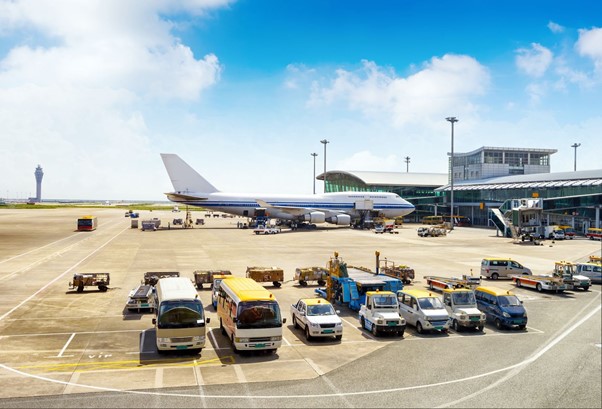
listed in a document that personnel can access. This document should be reviewed and updated at least once per year.
Which AOAs Produce The Highest Amounts of FOD?
FOD Sources are an important consideration when reviewing how it will be best managed and removed. According to an FAA study, over a ten-month period the majority (55%) of FOD items (regardless of size) were found on the aircraft stand/apron area. This is probably not that surprising considering the types of activities that usually take place in this area.
Personal Items
Employees have a responsibility to wear apparel that does not pose a FOD risk. Company dress code should encourage employees not to wear jewelry or other clothing that can become lost or dislodged (e.g., shirt buttons). If such apparel is worn at the facility, employees should remove it while in highly sensitive areas.
Employees should consume food only in designated areas that are marked by appropriate signage. Edibles should be kept in a sealed container when carried to these areas. Additionally, designated food and drink areas should be set up at a reasonable distance from areas where hazardous materials are present.
Packaging, Handling, Storage, and Transportation (PHST)
The proper management of packages and their contents is essential for reducing the FOD risk at an aviation facility. Damaged or inadequate packaging (e.g., too small or lightweight for its contents) can cause foreign objects to compromise the safety of the area. PHST-related safety practices include:
- Thoroughly cleaning containers used to store and transport tools and equipment.
- Ensuring that containers used to store and transport tools and equipment are outfitted with barriers to prevent small accessories from falling out.
- Ensuring that transported materials are properly packaged and/or isolated from one another to prevent cross-contamination from debris.
- Using containers that do not themselves pose a FOD risk (e.g., due to damage or loose parts).
FOD Incident Reporting
Employees who encounter foreign objects or equipment damage attributable to foreign objects should understand how and when to report these incidents.
Reporting Criteria
Typically, an incident report should be filled out and given to the appropriate authority when one or more of the following conditions are observed:
-
A tool or other object is lost in a FOD Prevention Area and cannot be located after a proper inspection of the area.

-
FOD is present in equipment that should not contain such debris when it is found.
-
Possible FOD-related damage is detected in a particular piece of equipment.
-
A container used for storage or transportation is found to hold a foreign object unrelated to the materials that are or were supposed to be inside it.
-
A spot in a FOD-sensitive piece of equipment that ordinarily is filled by or holds a part or accessory is vacant.
Incident reports should be filed within 48 hours of the discovery of the conditions in question. An investigation of the incident, including any recommendations for corrective action, should be completed within two weeks of filing the initial report. All incident-related data should be entered into a database for analytical purposes.
FOD Walks
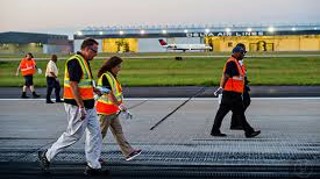
A FOD walk is a safety procedure where a group of people, acting in a coordinated manner, search through an area where foreign objects might be found. Often, FOD walks are performed by arranging the group in a side-by-side formation to ensure that no spots are overlooked. During a FOD walk, participants remove debris encountered and dispose of it in accordance with company policy. Collected items should be listed in a document for future analysis.
After the FOD walk has been completed, the supervising manager should meet with all the participants as a group and discuss any findings. When documenting debris encountered during FOD walks, it is helpful to classify each item by type. Here is an example of a classification system that can be used for recording FOD, including some examples:
-
Tools – Wire cutters, hammers.
-
Small Parts – Nuts, washers.
-
Personal Items – Eyeglasses, writing pens.
-
Miscellaneous Debris – Metal shavings, plastic.
Recording data associated with each FOD material allows the company to detect long-term trends and weaknesses that should be addressed. In general, items collected during a FOD walk do not require an incident report. However, this practice may depend on the type of debris found and the safety regulations of the facility.
FOD Surveys and Audits
Management must be open to making changes to existing FOD procedures to ensure optimal safety at the facility. To that end, management should undertake regular audits that involve all aspects of the FOD program. These audits should take place at least once per year. A serious FOD incident may trigger an audit outside the regular schedule.
FOD Record Retention
The company should preserve records of FOD incidents and other FOD-related documentation (e.g., audit reports). Maintaining these records allows for the analysis of recurring issues and trends over time. Older documents can be removed from the record; if this practice is followed, management should determine the precise length of time that should pass before documentation can be thrown out.
Equipment Maintenance
Tools and equipment used or stored in FOD Prevention Areas must be routinely inspected for defects that can interfere with their proper functioning. These products must also be analyzed for parts and components that can release FOD into the area. For instance, a tiny washer or shaving might drop off an old tool that has been worn from years of use.

Types of equipment that should be inspected include, but are not limited to, tools (hammers, wrenches), testing equipment, support equipment, containers (forstorage or transportation), rivets, spacers, wire terminals, and fixtures. Equipment that is broken or worn must be repaired to a state where no FOD risk remains. Equipment that cannot be adequately repaired should be replaced.
Accountability Checklists
These checklists are helpful for tasks that involve a complicated series of steps that must be completed. For example, an accountability checklist can include the various steps in a task, the different items that must be tracked during the completion of the task, or some combination of both.
In general, one employee should be responsible for ensuring that the checklist is followed. Ideally, maintaining the checklist should be the employee’s sole responsibility while the task is being completed.
Tool Control
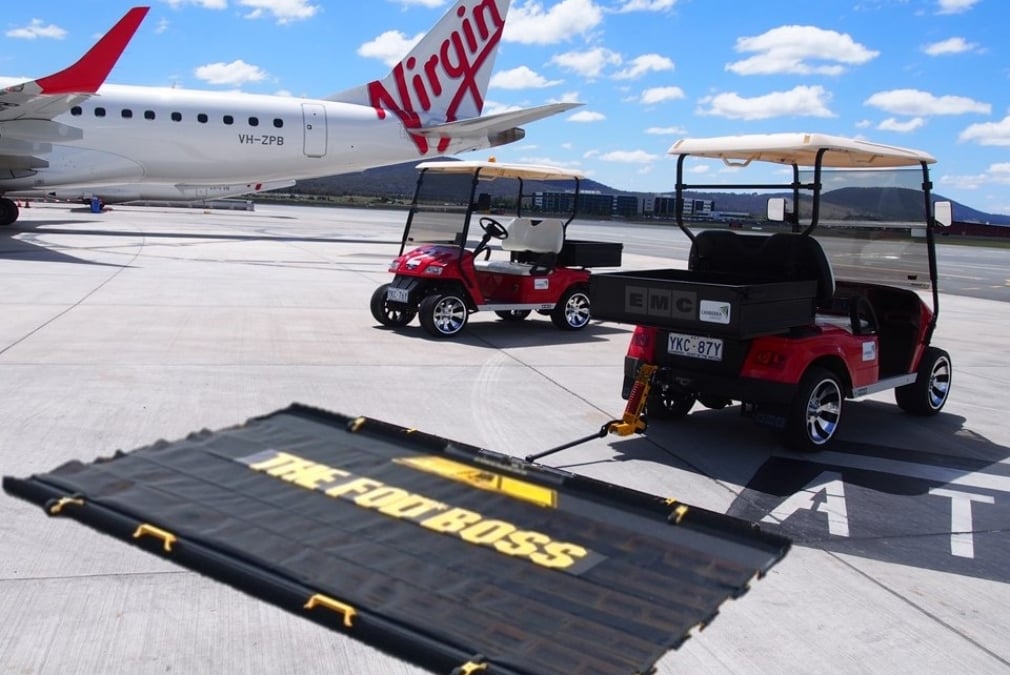
Because misplaced tools pose a serious FOD risk in an aviation workplace, management must ensure that these items are carefully tracked at all times. In general, any organizational system must follow two principles:
-
Every tool has a dedicated storage space.
-
Every tool in use can be traced to a specific employee.
Under certain conditions, one or both of these guidelines can be disregarded when establishing a tool control program. However, management should have the final say in what rules must be observed.
There are many types of tool control systems currently in use today. Below is an overview of some of the more common ways of tracking tools:
-
Color coding – Each tool has a tag or another material with a color associated with a specific storage spot. For instance, a hammer with a red tag should be returned to a box that also bears a red tag.
-
Etching – Each tool is etched with a number, barcode, or another type of mark that identifies its proper storage spot. Often these marks are engraved via laser etching.
-
Check-in/out sheet – With this system, the employee who wishes to take a tool out of storage writes their name (or ID number) and the current time on a sheet of paper provided for this purpose. When the employee no longer needs to use the tool, they return it to storage and notate the time on the sheet. Then, at the end of a shift, the sheet can be examined to see if any tools that were checked out were not properly returned.
-
Inventory sheet – This is simply a list of all items that belong to a particular storage spot. When a shift has ended or a delay or early stoppage in a specific task, all tools should be restored to their proper place. The sheet allows a supervisor to check whether any tools are missing, which ordinarily triggers an immediate search for the lost items.
-
Chit system – This method involves assigning every worker one or more tokens (chits), each of which contains an employee ID or other personally identifiable data. When the employee takes a tool out of its storage space, they must leave their token in the spot. This means that a missing tool can always be linked to a particular employee, making search efforts easier. It also helps employees locate a tool they need to borrow for a temporary or emergency task.
-
Shadow boards – These boards are marked with a precise outline where each tool should be placed when not in use. Thus, when a tool has gone missing, it can be identified by its distinctive outline. This also makes it easier to perform an end-of-shift check to determine whether all tools have been returned to their proper place.
-
RFID chip encoding – This system uses radio frequency identification (RFID) technology to track tools. Each tool bears an electronic chip that can be used to locate its current location with a scanner, which reduces the likelihood that the item will become lost. The chip can also be configured to store other information, such as the identity of the tool’s last user.
-
Kit systems – This involves allowing an employee to use customized kits or organizers to transport tools or accessories. Each kit contains only the items needed for a particular job, with no unnecessary pieces. Using these kits reduces the chances that unused items become lost without being noticed. In addition, kit systems are beneficial for tasks that require the use of extremely small parts.
-
Automated Dispensing Units (ADUs) – These machines, already widely used in healthcare facilities, operate much like vending machines. They enable a worker to take a tool by confirming their identity in some way, often through barcodes. The ADU system tracks who has taken which tools and other relevant information, such as the length of time items were borrowed.
Very tiny tools are often unsuitable for standard tracking systems, as these items tend to be too difficult to mark individually. Nonetheless, these products can become small debris that could potentially cause damage; therefore, they must be adequately tracked somehow. Items such as these should be kept in a container that can be individually identified. An employee who wishes to use one or more of the items inside a container should be required to take control of the entire container and be responsible for all its contents.
Points of Contact
One or more employees or managers should be assigned to act as points of contact for the facility’s FOD prevention program. These points of contact should be able to provide clarification, offer guidance, or issue commands relating to fulfilling the FOD-related rules and regulations at the company. The FOD Plan documentation should list the points of contact for employee reference.

Summary
Maintaining a proper FOD Plan — and educating employees on their responsibility to follow it — is one of the most effective ways that an aviation facility can reduce the incidence of foreign object damage and remain compliant with the guidelines of the Federal Aviation Administration (FAA) and ICAO.
For high-quality FOD prevention equipment that can help you maintain a safe workplace, be sure to contact us.
